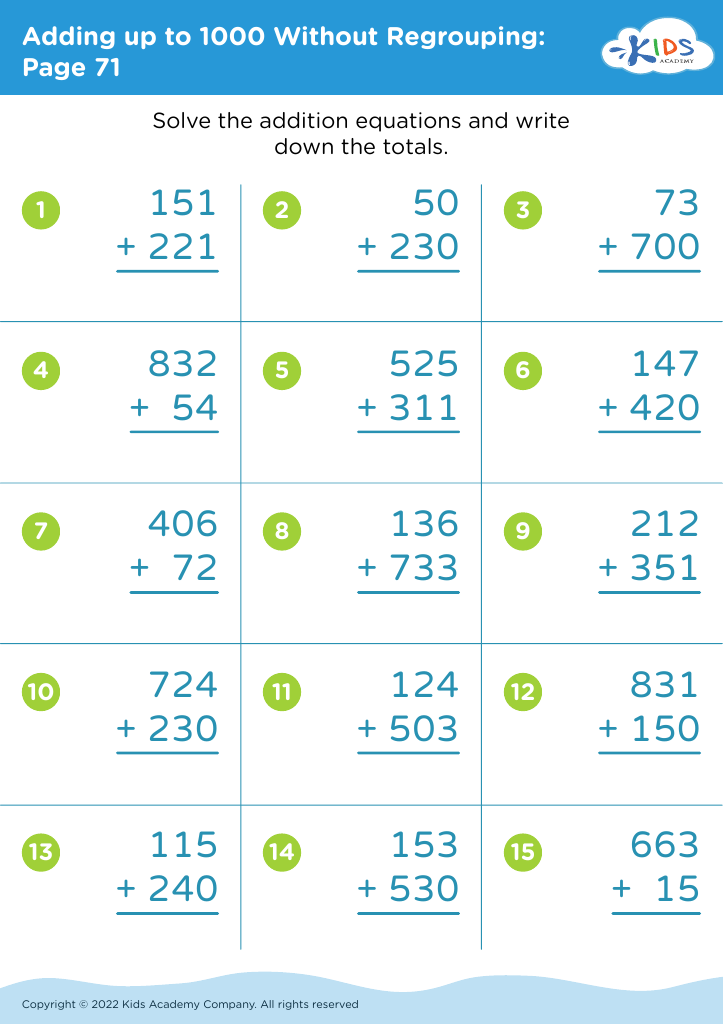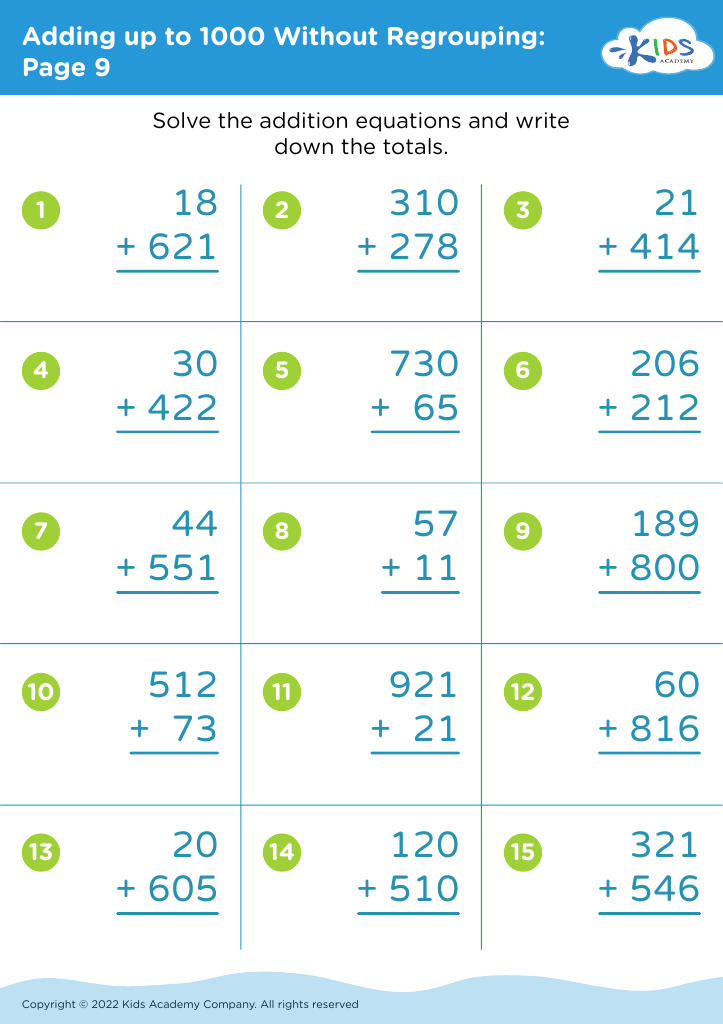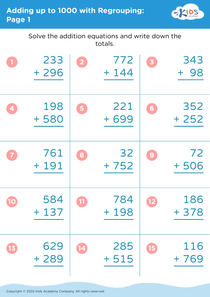Recognize patterns Adding up to 1000 Without Regrouping Worksheets for Ages 5-9
3 filtered results
-
From - To
Discover our "Recognize Patterns Adding Up to 1000 Without Regrouping" worksheets, specially designed for ages 5-9. These engaging activities help young learners identify numerical patterns as they practice addition skills without regrouping. By exploring various visual aids and straightforward exercises, children will gain confidence in their math abilities while enhancing their problem-solving strategies. Perfect for classroom use or homeschooling, these worksheets foster critical thinking and reinforce foundational math concepts. With colorful designs and age-appropriate challenges, children will find joy in recognizing patterns, making math an enjoyable part of their learning journey. Unlock the power of patterns today!
Recognizing patterns in numbers, particularly when adding up to 1000 without regrouping, is crucial for children aged 5-9 for several reasons. First, it develops foundational math skills. Understanding patterns helps young learners grasp the concept of addition as they begin to see how numbers relate to one another. This is essential for building their confidence in math.
Second, recognizing patterns fosters critical thinking and problem-solving abilities. When children can identify sequences, they are better equipped to tackle larger problems and are more likely to develop strategies that enhance their overall cognitive skills. This lays the groundwork for more advanced math concepts they will encounter later.
Moreover, teaching children to recognize patterns can lead to quicker and more efficient calculation methods. By spotting relationships, such as adding multiples of ten (e.g., 120 + 230), students can arrive at the correct answer with greater speed and accuracy, making math more approachable and less intimidating.
Finally, pattern recognition has implications beyond math. It encourages creativity, logical reasoning, and the ability to apply learned concepts to new situations. Parents and teachers should care about this skill, as it nurtures not just mathematical minds but well-rounded, critical thinkers.













